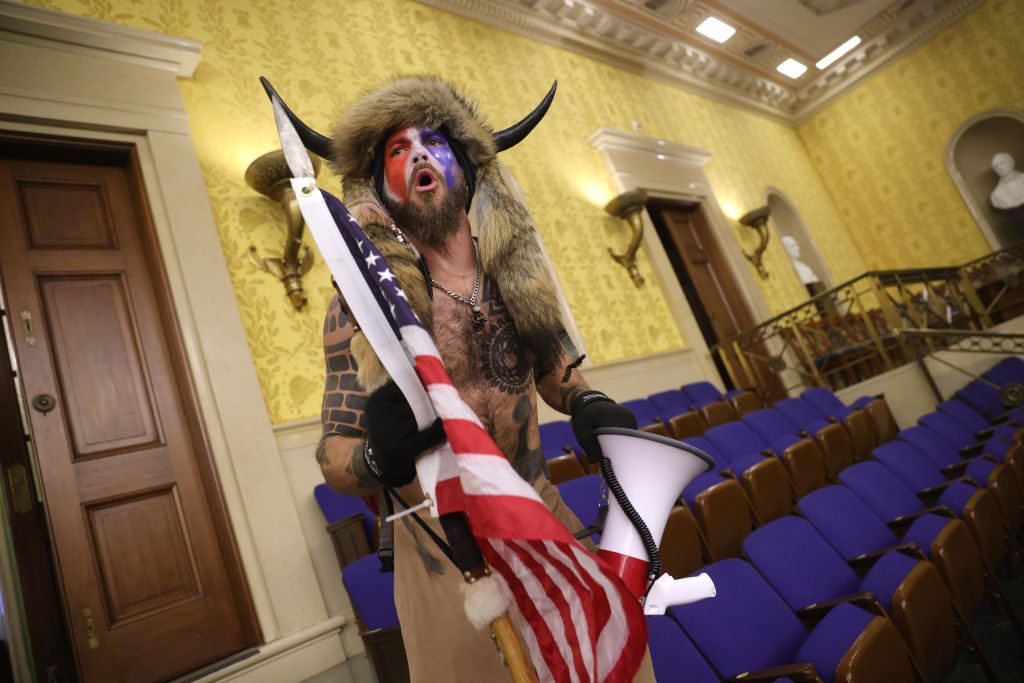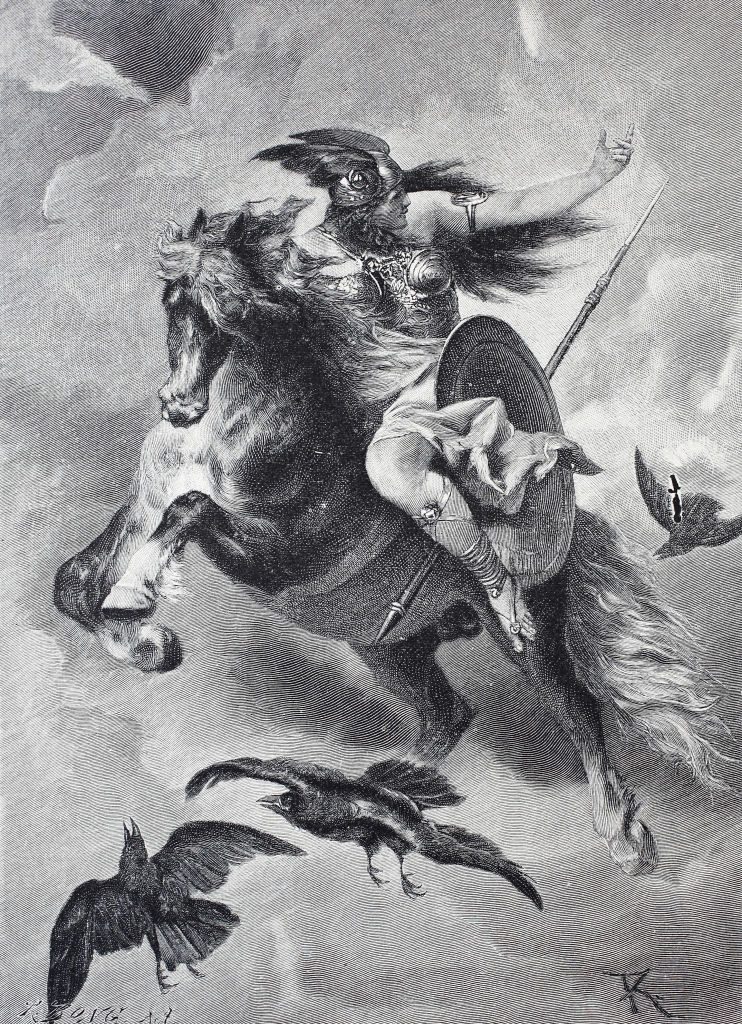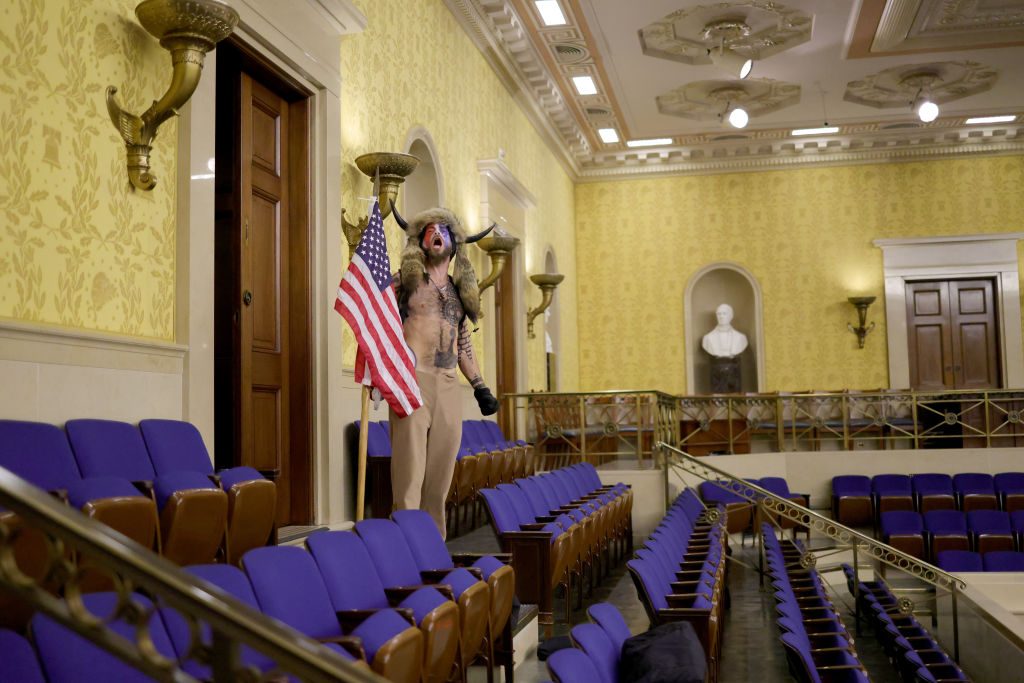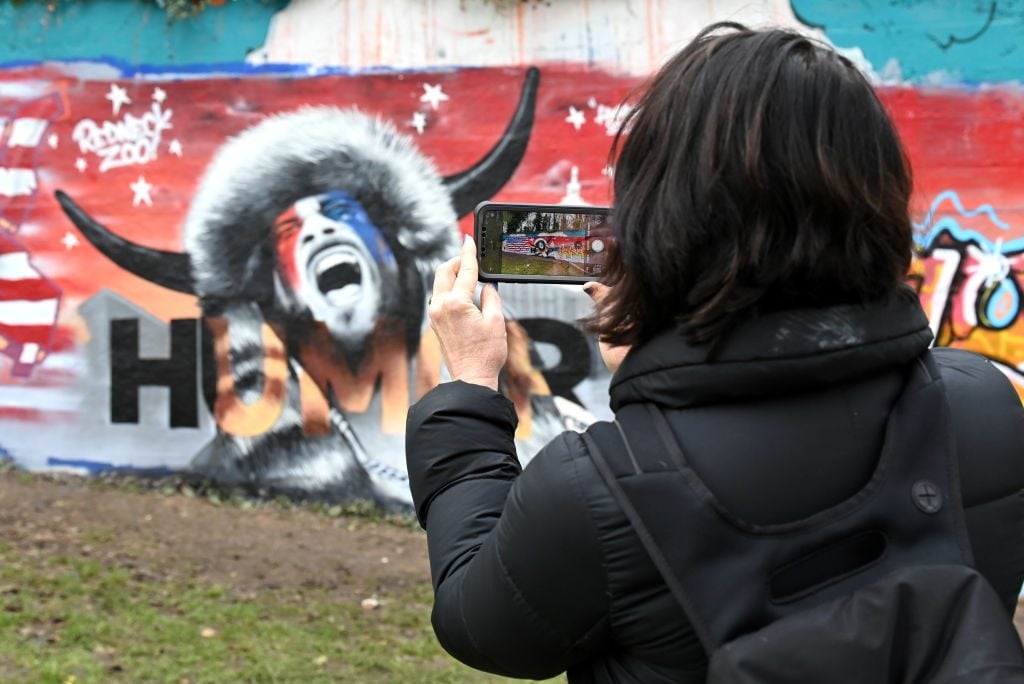He described himself as a QAnon digital warrior, a shaman and ordained minister, a published author and former YouTube personality and, above all, a huge fan of President Trump.
| Msg ID: 2733618 |
CNN rateings +4/-3

|
| Author:Old Guy
6/25/2022 12:31:37 AM |
Many said that because of the blatant bias and anti-Trump rhetoric they just turned it off, or looked for other news sources. CNN ratings plummets to the lowest audience in 22 years. Obsession with Jan 6 is just not working! |
|
|
Return-To-Index |
| Msg ID: 2733737 |
Like I care... Like anybody with rational thought processes cares what CNN +3/-0

|
| Author:TheCrow
6/26/2022 11:25:20 AM Reply to: 2733618 |
Like I care... Like anybody with rational thought processes cares what CNN reports. Anybody who relies on CNN as a single news source will only read books with pictures. Lots of pictures and dialogue baloons... |
|
|
Return-To-Index |
| Msg ID: 2733810 |
Like I care... Like anybody with rational thought processes cares what CNN +2/-2

|
| Author:Shooting Shark
6/26/2022 11:38:29 PM Reply to: 2733737 |
I'd say the same for you. Disgusting RINO! Here's a picture for you: |
|
|
Return-To-Index |
| Msg ID: 2733812 |
This is the level that the Extreme Right is operating at... (NT) +3/-0

|
| Author:Jett
6/26/2022 11:41:10 PM Reply to: 2733810 |
|
|
|
Return-To-Index |
| Msg ID: 2733859 |
This is the level that the Extreme Right is operating at... +3/-0

|
| Author:TheCrow
6/27/2022 12:48:57 PM Reply to: 2733812 |
I wouoldn't pretend that the 'January 6 shaman' was a typical Trump reactionary. But his beliefs that he uses to justify his activism, even on January 6 are, at the very least- irrational if not outright crazy. Except that he believes that the QAnon position reflects a reality of those who are in power. A principle of rational western thought and principles since The Enlightenment is that we condemn nothing and nobody without evidence. Welcome to Trumpworld, where everything exists or it's value is deteremined by Trump's latest utterances. I can't use the term "Trump's latest statements" because he has no principlesor standards to base his words on, except that they must benefit Donald J Trump (the 'J' is for jenius, which The Donald is 'a very stable one').
Chansley, 33, of Phoenix was one of the most distinctive individuals roaming the Capitol Wednesday: Shirtless and tattooed, wearing face paint and sporting a headdress made of coyote skin and buffalo horns (not bearskin, as alleged by authorities), he was photographed flexing near the vice president’s chair in the Senate. Carrying a bullhorn and a flag-draped spear as he joined a mob of people who forced their way into the building, Chansley said in an hour-long, often rambling interview on Friday that he danced, sang and prayed there, drumming on the floor with his pole “to reclaim our nation.” He denied committing any violent acts. Chansley said he called the FBI himself — which the agency confirmed in court papers — to acknowledge that he was the person in photographs of the riot. He spoke as he was driving back to Arizona, and he said he was not afraid of arrest. “I trust in God and I know that I didn’t do anything wrong,” he said. “And even if I was arrested, wasn’t Gandhi arrested a lot? Wasn’t Martin Luther King Jr. arrested a lot? Wasn’t Jesus arrested? I put my trust in God, not the government.” Chansley supports the baseless claim that there was widespread fraud in the presidential election. He said he traveled to Washington to strike a blow against what he called the “deep state.” He rejected the idea that his actions could be construed as rioting or insurrection. “I believe personally the Founders would have done what it is we did on [Wednesday],” Chansley said, arguing that a double standard has been applied to Black Lives Matter protests last year that saw acts of violence among some of the demonstrations. “BLM used molotov cocktails to set fire to places,” he alleged. “Casualties on either side break my heart. Violence is really unnecessary.” Chansley said he had spent much of his life around Phoenix, following a spiritual path that led him from Catholicism to a mix of pagan and New Age-like religious beliefs. His shaman’s clothing reflected that, he said. The fur is that of a coyote, an animal that some Native American traditions have long regarded as a trickster. “That’s why I wear the skin . . . because you cannot pull the wool over the eyes of an Angeli,” he said. He is also heavily tattooed with Nordic insignia that Rolling Stone reported as having been adopted by far-right white nationalists. Chansley was reluctant to divulge much about his personal life or his family, saying his mother and others have already been subjected to intense media attention and doxing. He said he took courses at Glendale Community College in religion, philosophy and psychology, as well as ceramics. He also described working in a group home for troubled youths for a time — which could not be immediately verified — before setting out on a path as an actor, artist and public activist. Chansley had a channel on YouTube that has been deleted but still posts videos as YellowstoneWolfAZ on Rumble, which has been described as a conservative alternative to YouTube. The site says he has posted 23 videos and has about 2,200 followers. He wrote two books: “Will & Power: Inside the Living Library (Volume 1)” under the pen name “Loan Wolf.” He also wrote “One Mind at a Time: A Deep State of Illusion,” using the name Jacob Angeli, saying that’s the name he prefers because he rejects his father’s name. He would not go into his reasons. Last February, Chansley, clad in his shaman’s clothing, appeared at a Trump rally carrying a sign that read “Q sent me” — referring to an online culture that traffics in conspiracy theories. “You all know who Q is?” he yelled, according a report in the Arizona Republic. Local news also reported that he joined protests outside election offices in Phoenix while votes were being tabulated in the November presidential election. In his interview Friday, Chansley described a world run by dark, unaccountable forces and wove together historical facts with hoary conspiracy theories that have been repeatedly debunked. It was a worldview that drew on the United States’ welcoming former Nazis to its rocket program, which would ultimately jump-start its space program, known as Operation Paperclip, and the country’s illicit experiments on brainwashing using psychoactive drugs. At one point, he quoted at length from President John F. Kennedy’s 1961 speech to members of the press on the dangers of the worldwide and clandestine threat posed by communist forces. But Chansley also drew those bits of fact into unproven and fantastic territory.
“You didn’t know that when you watch television, when you listen to the radio, there are very specific frequencies that are inaudible that actually affect the brain waves of your brain?” he said. “This has been going on for quite some time.” Chansley also went into the Bilderberg conspiracy, the allegation that global elites are running the world, and other unproven or occult theories, including allegations of secret rings of child abusers and satanic worship. He viewed the Masons’ imprint on the design of Washington’s landscape as arranged along “ley lines” — the supposedly ancient practice of aligning landmarks — in ways that accentuate the Earth’s magnetic field. As he marched to the Capitol with fellow Trump supporters along these, he said felt the special intensity that comes from alignment that put him in tune with supernatural forces. “What we did on Jan. 6 in many ways was an evolution in consciousness, because as we marched down the street along these ley lines, shouting ‘USA’ or shouting things like ‘freedom’ . . . we were actually affecting the quantum realm,” Chansley said. Chansley has been charged with knowingly entering or remaining in any restricted building or grounds without lawful authority, and with violent entry and disorderly conduct on the Capitol grounds. He is in custody pending a hearing on Monday. Julie Tate contributed to this report. |
|
|
Return-To-Index |
| Msg ID: 2733855 |
Like I care... Like anybody with rational thought processes cares what CNN +3/-0

|
| Author:TheCrow
6/27/2022 12:27:20 PM Reply to: 2733810 |
I'd say the same for you. Disgusting RINO! Here's a picture for you: I have to admit the accuracy of your statement- that is a picture. But a picture of what? Is that the typical dress of a conservative Republican? Or, is that what an out of work actor wears to attract attention to his presence, distingtuish himself. Of course, he is a poser, a fake, just as all the 'conservatives' who rioted are fakes. That was a purely reactyionary mob incited to action nnot for principles but in direct reaction to rabble-rousing words by Trump. This fake native American is merely the most obvious poser. Op-EdThe Capitol Rioter Dressed Up as a Native American Is Part of a Long Cultural History of ‘Playing Indian.’ We Ignore It at Our PerilTo understand the many dangers posed by the Capitol riots, we must explore the symbolism behind the way they present themselves.
Of all the images to emerge from the white supremacist invasion of the US Capitol building, there is one that epitomizes this contradictory moment: Jacob Anthony Chansley (also known as Jake Angeli) standing shirtless in a horned helmet posing with an American flag on the dais of the Senate. His face is painted red, white, and blue; a pair of eagle feathers dangle from the fur-lined headdress. He flexes a bicep in defiance, as if he has just conquered a foreign land. I have seen this image before: hung on the walls of museums, in textbooks, chiseled in statues across the United States. It is an image of violent appropriation—a warning and a reminder. White supremacists like Angeli pose as Indians in order to create an image of themselves as inseparable from the land itself. They imitate Indigenous people and they justify their actions by imagining themselves as the natural heirs to a land retroactively emptied of Native Americans. 
Jake Angeli inside the Senate chamber after the US Capitol was breached on January 6, 2021. (Photo by Win McNamee/Getty Images) But we are still here. As a Cherokee Nation citizen, I have witnessed countless examples of the appropriation of Native American imagery and identity by non-Indigenous people. But Angeli’s pose—and its iconographic significance—is not just another instance of cultural appropriation. It is also an expression of an enduring desire for indigeneity without Indigenous people. Storming the Capitol was an expression of the inability to imagine a world in which white people do not automatically and inevitably wield the power over life and death in this country built on genocide and slavery. But this imaginary is unthinkable without first positioning Native Americans as inherently closer to “nature,” only to erase us from that natural landscape, and then, finally, replace us with white men posing as Indians. This is the history of the settler colonialism in the United States. Angeli is symptomatic of this history, not an outlier. While the majority of news outlets have described Angeli’s costuming as vaguely Viking in origin, this interpretation fails to consider the wider cultural history. Tropes of Native American wildness and proximity to nature were harnessed by Romantic-era artists in Europe who were disenchanted with the materialism brought by industrialization and longed for a return to a supposedly unspoiled, pre-modern life. In the mid-19th century, German painters turned to idyllic if moody landscapes and revived (or invented) Norse folk traditions in literature and music. This imaginary of pre-industrial life was itself influenced by earlier depictions of American nature on colonial maps and of Native Americans as part of nature itself. Such romanticized representations took shape in complex ways over a period of centuries, but it is important to understand that the Germanic revival of Norse mythology was, from the beginning, influenced by tropes of spiritual connection to land that can be traced to colonial depictions of Native Americans. But don’t take my word for it. Ironically, Richard Wagner’s wife, Cosima, described the very costumes that are now credited with popularizing the image of the heroic horned Viking—from Wagner’s operatic ring cycle Der Ring des Nibelungen—as “reminiscent of Indian chieftains” and “ethnographic nonsense.” The horned helmet has no basis in actual Nordic culture, but does have precedence in Native American communities. 
Ride of the Valkyries, Wallkürenritt, 1880, a scene from the opera Der Ring des Nibelungen by Richard Wagner. Digital improved reproduction of an original from the 19th century. (Photo by Bildagentur-online/Universal Images Group via Getty Images) In short, Viking imagery has been harnessed by white supremacists to reimagine the past, but Angeli’s pose is not just about the history of representation. It’s about how to make demands in the public sphere. It’s about power. What is the point of dressing up as Indigenous? According to the white supremacist vision of the United States, the contemporary moment has become corrupted by careerist politicians (“the swamp”), multicultural inclusion (non-white people), and government corruption (the vote is “rigged”). But critiquing the US government through its own mechanisms for dissent and protest is not forceful enough to “make America great again.” And therein lies the utility of the Indian for white supremacists. Indigenous people come to stand in for a primal connection to land, a warrior ethos and martial masculinity, and an opaque, mystical perspective on life that exists prior to the foundation of this corrupt government. Angeli, who was arrested on January 9, is a QAnon conspiracy theorist who calls himself a shaman and a hyperdimensional being. His posturing enacted a long tradition of what scholar Philip Deloria (Standing Rock Sioux) described as “playing Indian”—mimicking stereotypical imagery of Native Americans in a quest to assert a US national identity while also denigrating contemporary Indigenous people. Participants in the Boston Tea Party dressed in buckskins and face paint and belted out war whoops as they dumped tea into Boston harbor. Such racial cosplay often crops up in acts of civic disturbance. 
Jake Angeli inside the Senate chamber after the US Capitol was breached on January 6, 2021. (Photo by Win McNamee/Getty Images) I want to emphasize that Angeli is not just attempting to replicate an Indian image, but to live in Indianness as a statement of a right to the land, this place, this country. But what he does not realize is that this claim to aboriginal belonging is only possible because of the violent seizure of Indigenous lands by the very government that he now protests. Indigenous peoples are necessary for a vision of America as authentic and free, and yet we must be eliminated so past and present settlers can take our land and replace us with their own systems of government, culture, and history. Angeli’s theatrics are dangerous because they position Indigenous peoples as relics of the past. This appropriation of Indigenous life is akin to what anthropologist Renato Rosaldo has called “imperial nostalgia,” a yearning for a past that was destroyed by the very people who mourn its loss. It is no coincidence that there is a painting of Columbus’s landing hung in the Capitol rotunda. This posture marks ownership not because of what Columbus actually did—not how he himself posed—but how he has been portrayed in art and popular culture. It is a pose instantly recognizable because of its pervasiveness in US culture. I wonder if Angeli stopped to contemplate this image on his way to the Senate chambers. Or if, perhaps, his body simply remembered this pose as a form of settler-colonial muscle memory. 
John Vanderlyn, The Basics (1847) in the US Capitol rotunda. Yet Angeli’s pose also resembles the Romantic portraiture of artists such as George Catlin, who painted Indigenous subjects precisely because he saw them as destined for extinction. Take, for example, Catlin’s Máh-to-tóh-pa, Four Bears, Second Chief, in Full Dress from 1832. 
George Catlin, George Catlin, Máh-to-tóh-pa, Four Bears, Second Chief, in Full Dress (1832). Collection Smithsonian American Art Museum, Gift of Mrs. Joseph Harrison, Jr. White supremacy (indeed, whiteness itself) is neither natural nor innocent. Rather, it is both a structure of reality and a way of seeing the world. Angeli’s stance repeats a long history of violent occupation of Turtle Island by white settlers and the erasure of Indigenous people. As we bear witness to this surreal moment in which romantic portraiture and white supremacy converge, it is imperative that we see these images for what they are: an attempt to seize power by erasing people who never left.
Joseph M. Pierce is a citizen of the Cherokee Nation and associate professor in the department of Hispanic languages and literature at Stony Brook University.
|
|
|
Return-To-Index |
 A piece of graffiti art depicting the US Capitol riots appears in Kent on January 11, 2021. (Photo by Karwai Tang/WireImage)
A piece of graffiti art depicting the US Capitol riots appears in Kent on January 11, 2021. (Photo by Karwai Tang/WireImage)